Estimated reading time 13 minutes, 4 seconds.
After a 13-year hiatus, Edwards Air Force Base (AFB) held an open house on Oct. 15 to 16, 2022, to showcase the best of aviation — which included the completely new Aerospace Valley Air Show. A large hangar was filled with hands-on exhibits, speakers, educators, contractors, maintainers, and military personnel presenting all aspects of air and space exploration. A Science, Technology, Engineering, and Math (STEM) fair was also integrated into the event to introduce the next generations to the fields of aviation, engineering, and flight.
The renowned Edwards AFB is steeped in history. It was named after Canadian-born Glen Edwards, who moved with his family from Medicine Hat, Alberta, to the Sacramento area of California when he was 13. He joined the Army Air Corps five months before Pearl Harbour at the age of 25. He was a prodigious pilot during the Second World War, flying 50 combat missions in North Africa and earning four Distinguished Flying Crosses and six Air Medals. Returning to the U.S. in late 1943, he became a Flight Standards Officer, then a graduate of Test Pilot School, and eventually conducted Bomber testing at Muroc AFB (now Edwards AFB).
Edwards worked on the XB-35, XB-42, and XB-46 programs. He was on the shortlist to fly the X-1, only to lose out to Capt Chuck Yeager, which prompted Edwards to return to university in 1946. After graduating in 1947 from the Princeton Aeronautics program, Edwards became one of a new breed of engineer test pilots. He returned to Muroc in 1948, and during a June 5 test flight of a Northrop YB-49 flying wing, Edwards crashed along with four others. He was only 32.
On Dec. 8, 1949, Muroc AFB was officially redesignated as “Edwards Air Force Base.”
Edwards AFB can trace its roots back to pre-Second World War (1932) as a bombing range away from populated areas. In the high desert of California, north of Los Angeles and over the San Gabriel Mountains, lies a large, dry salt flat that is part of the Mojave Desert. Nearly perfectly flat and having an area of 170 square kilometres (65 square miles), the natural lake bed surface is hard enough to withstand the heaviest of modern aircraft. During the Second World War, the Muroc Army Airfield provided bomber crew training and, because of its secluded location, quickly became a testing and development facility “away from prying eyes.” The first jet aircraft developed in the U.S., the Bell XP-59 Airacomet, made its first flight there on Oct. 1, 1942.

As tradition at the Aerospace Valley Air Show, the event opened with a BOOM! — a sonic boom created by fighter aircraft flying high overhead, diving slightly, breaking the sound barrier, and sending a sonic pulse that takes over a minute to reach the unsuspecting crowd below. More than 100,000 visitors over three days most likely got to experience their first sonic boom — a real show opener.
The flying started with parachute jumpers from a C-17; the type had its initial test flights at Edwards in 1991. The jumpers were from the USAF parachute team and later used Special Forces parachutes. The Special Forces parachutes were tested at Edwards for such factors as durability, controllability, quietness, glide ratio, sensor signatures, and load capacity. Test jumps were conducted from an altitude over 30,000 feet and allowed the parachutists to fly over 50 km from the drop aircraft to a landing zone.

The show then demonstrated the tactical use of the current USAF assets by simulating the recovery of a captured airfield. F-35s and F-22s established air superiority by chasing away aggressor F-16s. Then, friendly F-16s were called in to neutralize specific ground targets, all while the F-22s and F-35s flew top cover.
The top cover aircraft demonstrated air-to-air refuelling by hooking up with a KC-135 tanker, and simulated “passing gas.” Lastly, the heavily fortified enemy targets were laser targeted, and a B1-B was sent in to eliminate the threat. That resulted in several pyro “walls of flame” and a “victory roll” by the B1-B — much to the audience’s pleasure.
The flying schedule changed pace and took the audience on a wartime pilot cadet development journey.

Vicky Benzing flew her 1930s Stearman biplane, known as a PT-17 in the Army Air Corps — with “PT” standing for “Primary Trainer.”
Next was an AT-6 Texan trainer, “War Dog,” owned and flown by John Collver. The “AT” stands for “Advanced Trainer.” This particular AT-6 has the tail code designation “WD,” which pays homage to Walt Disney who provided this specific unit’s MCAS El Toro — a mascot caricature of Ferdinand the Bull — in 1943.
Last was the P-51D Mustang “Man-O-War” piloted by Ken Gottschall, which was the pinnacle of wartime flying to a successful cadet. Gottschall, a Reno Air Race pilot, flew a graceful demonstration while using the control tower as a turn pylon.
Jet age training was represented by Greg Colyer flying his Canadair-built T-33 “Ace Maker.” The T-33 was developed from the Lockheed P-80 and conducted its flight testing at Edwards in 1948.
Several civilian aerobatic acts rounded out the flying program, including Bob Carlton and his jet-powered Salto sailplane; Chuck Coleman in his Extra 300; Rob Holland, the multiple U.S. and world aerobatic champion, in his custom-built MXS; and, finally, six homebuilt RVs in a formation demonstration as “Dawn Patrol.”
NASA and the German Space Agency SOFIA (Stratospheric Observatory for Infrared Astronomy) — a mobile infrared telescope — made a once-and-only appearance at a public event. A significant engineering feat, SOFIA carried a 17-tonne glass reflector telescope in a highly modified Boeing 747-SP to an altitude of 45,000 feet to escape 99 percent of the Earth’s atmospheric water vapour. After more than 730 missions, SOFIA was retired from active service on Sept. 30, 2022.
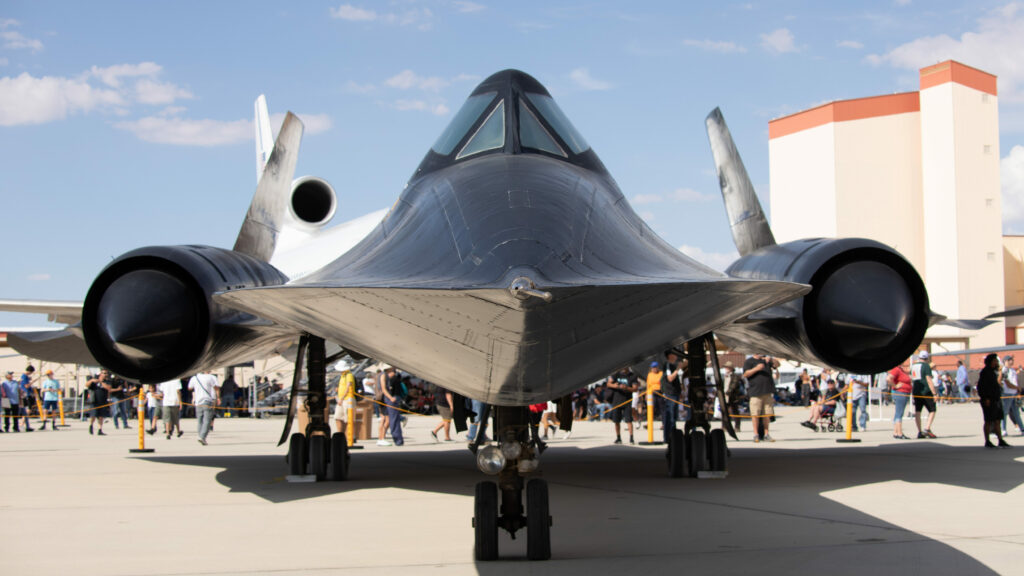
NASA flew several passes of their Gulfstream G-3, F/A-18, and F-15B Eagle. They also provided sonic booms from high above. Today, the onsite Armstrong Space Center uses the civilian registered fighters as chase planes and test beds.
The Lockheed Skunk Works “Darkstar” movie prop from Top Gun: Maverick and an Edwards static SR-71 Blackbird were also on display.
The USAF Thunderbirds, which are celebrating their 75th anniversary this year, concluded the flying display with their usual finesse, speed, and the occasional sneak pass to get the audience’s adrenaline pumping.


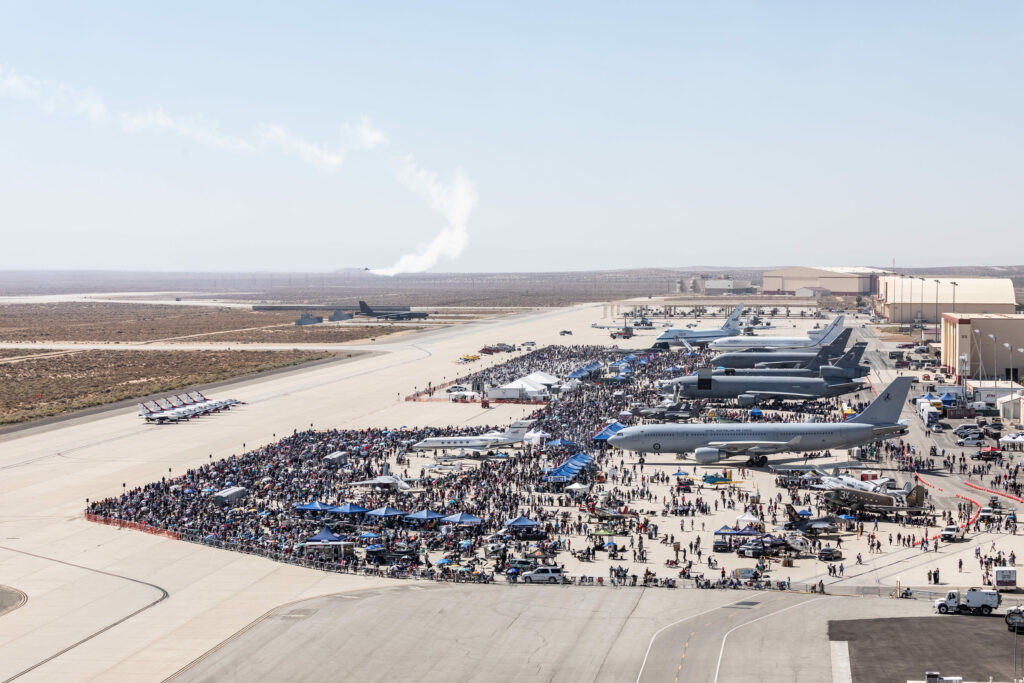
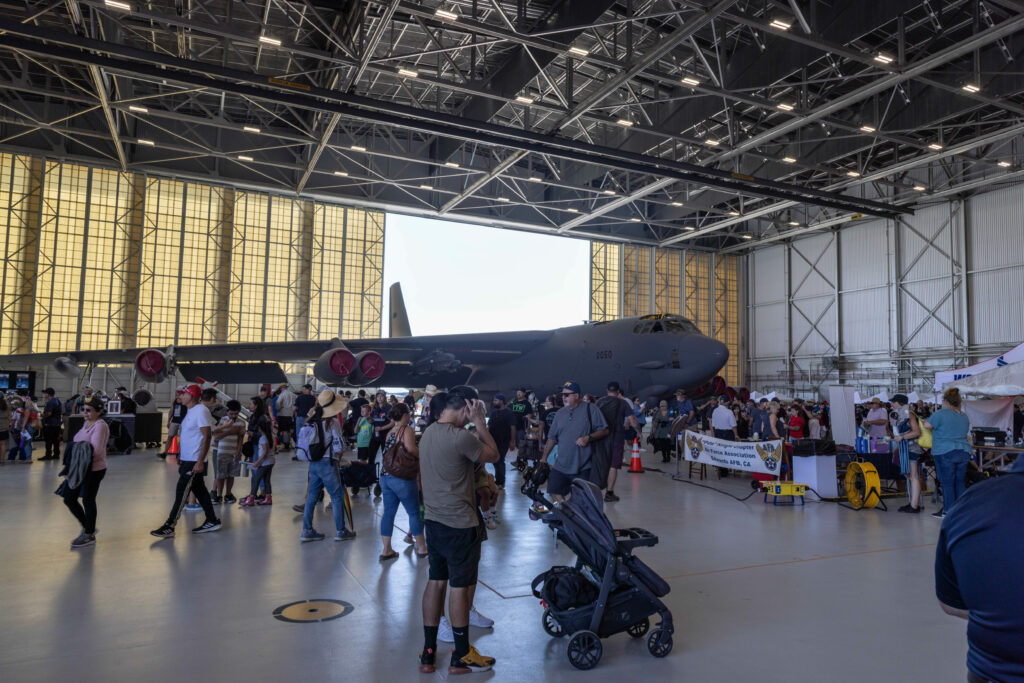
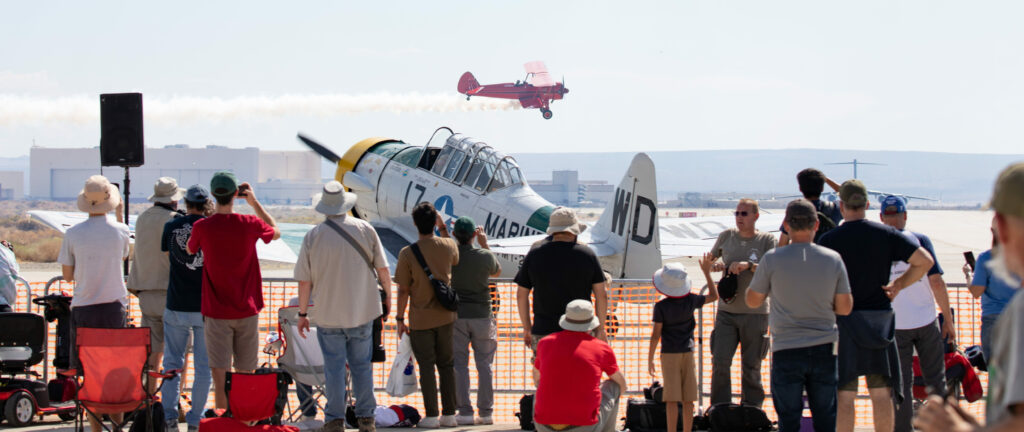
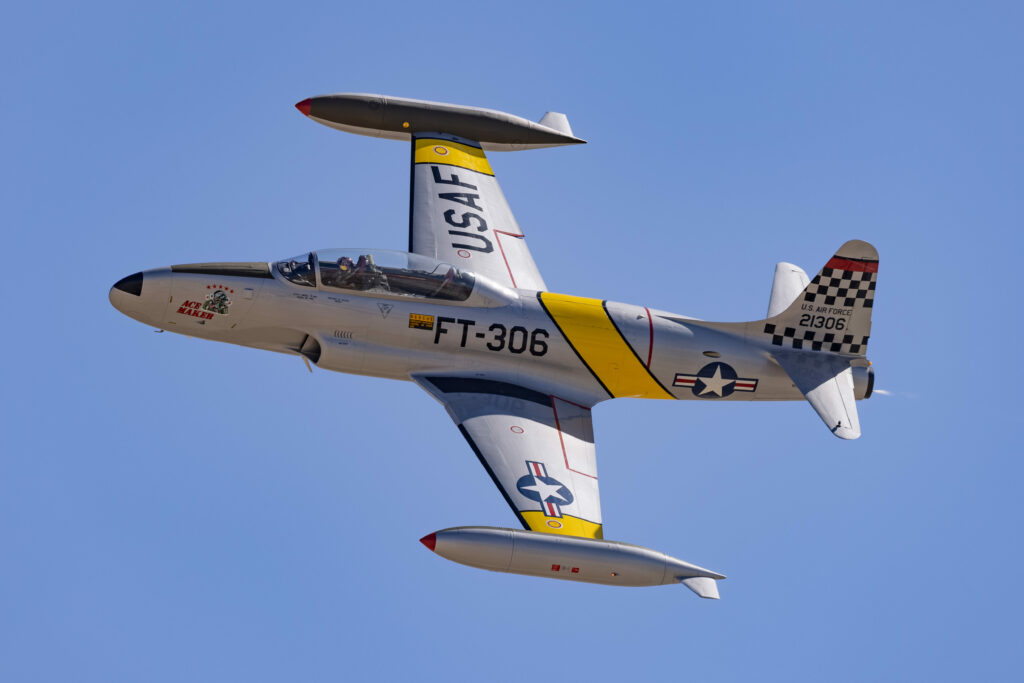
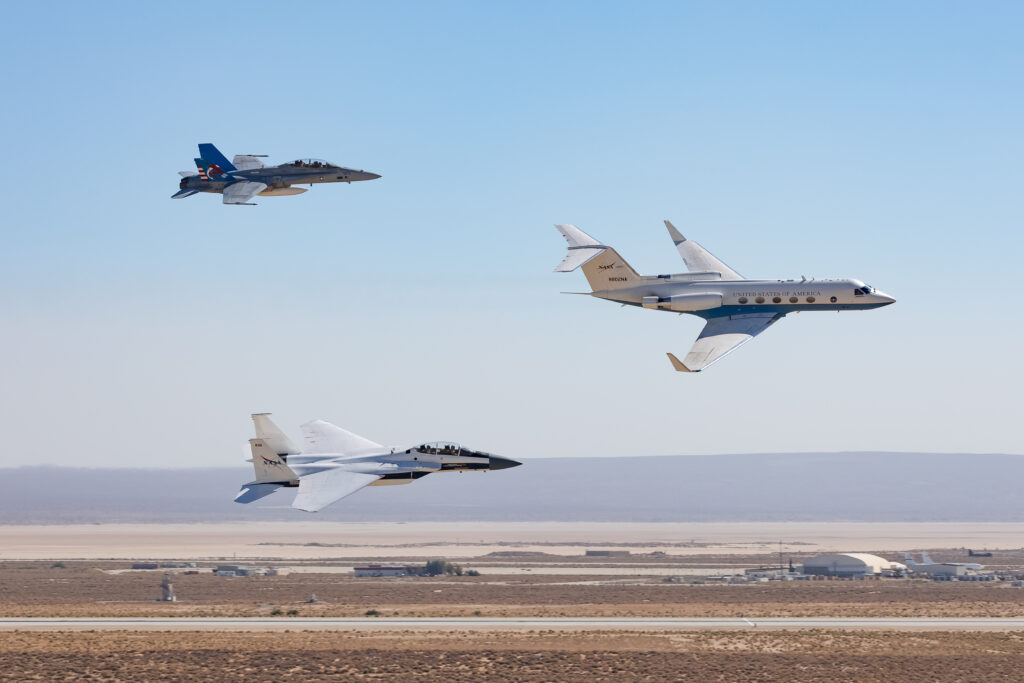










Is there an air show scheduled at Edwards for this year?